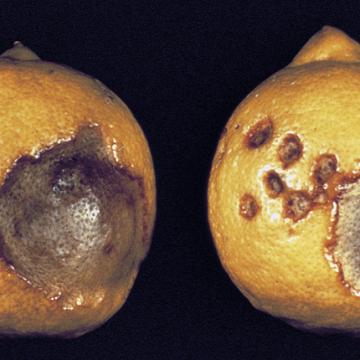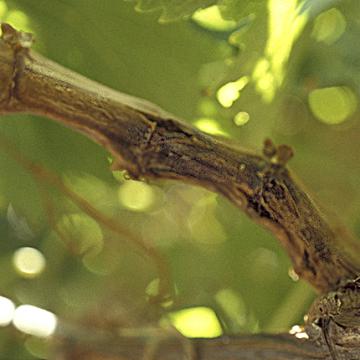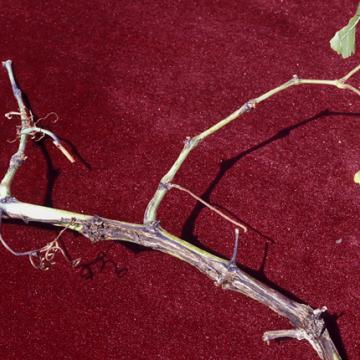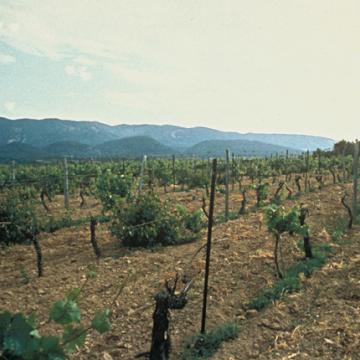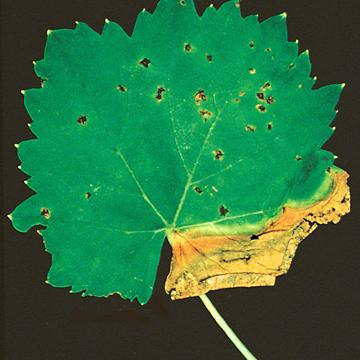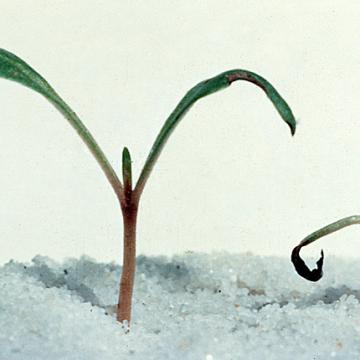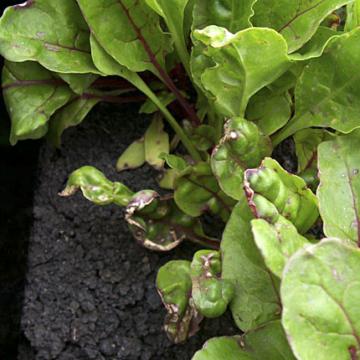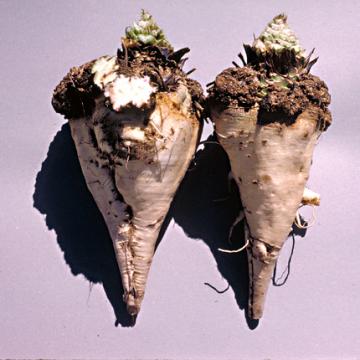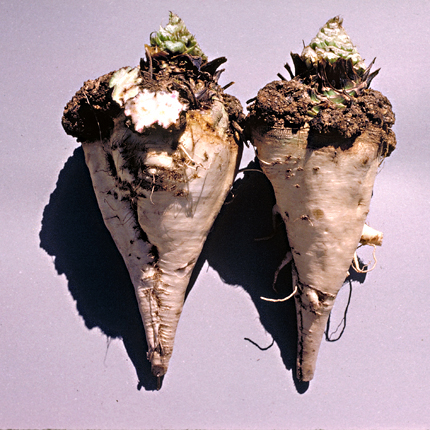DISEASE: Bacterial blast and black pit
HOST: Citrus (Lemon)
The term "black pit" refers to black lesions on fruit, which may be specks or large, sunken pits as seen here. They also may be light tan, later becoming reddish brown to black.
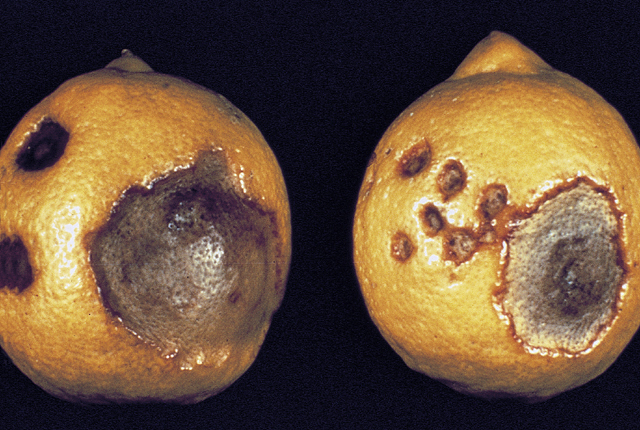
Bacterial blast and black pit | Citrus (Lemon)
DISEASE: Bacterial blast and black pit
HOST: Citrus (Lemon) (Citrus limon)
PATHOGEN: Pseudomonas syringae pv. syringae
SOURCE: J. Menge
DISEASE: Bacterial blight (Bacterial necrosis)
HOST: Grape
Stem necrosis of grape.
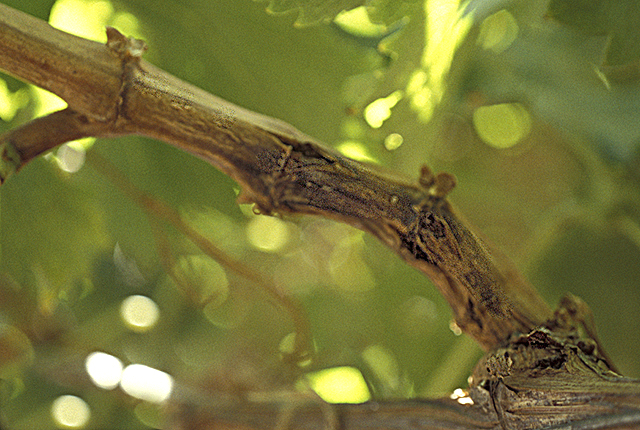
Bacterial blight (Bacterial necrosis) | Grape
DISEASE: Bacterial blight (Bacterial necrosis)
HOST: Grape (Vitis vinifera)
PATHOGEN: Xylophilus ampelinus
PATHOGEN SYNONYM: Xanthomonas ampelina
SOURCE: N. Schaad
DISEASE: Bacterial blight (Bacterial necrosis)
HOST: Grape
Stem with cankers and discolored external tissues.
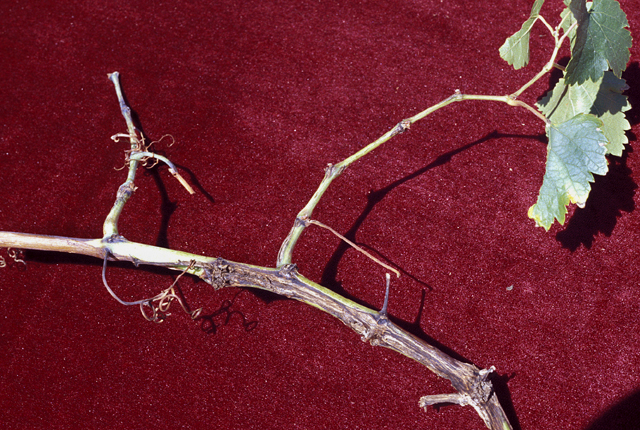
Bacterial blight (Bacterial necrosis) | Grape
DISEASE: Bacterial blight (Bacterial necrosis)
HOST: Grape (Vitis vinifera)
PATHOGEN: Xylophilus ampelinus
PATHOGEN SYNONYM: Xanthomonas ampelina
SOURCE: N. Schaad
DISEASE: Bacterial blight (Bacterial necrosis)
HOST: Grape
Severe infection in vineyard is noted by dead canes. Symptoms are most severe in spring; shoot blight, occasional spots on leaves, and cankers are common.
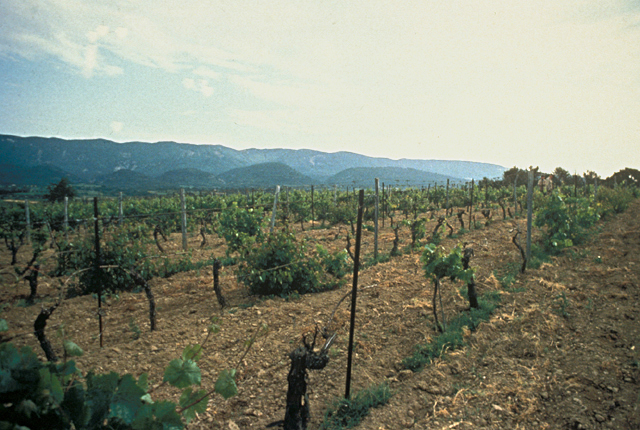
Bacterial blight (Bacterial necrosis) | Grape
DISEASE: Bacterial blight (Bacterial necrosis)
HOST: Grape (Vitis vinifera)
PATHOGEN: Xylophilus ampelinus
PATHOGEN SYNONYM: Xanthomonas ampelina
SOURCE: C. Manceau, N. Schaad
DISEASE: Bacterial blight (Bacterial necrosis)
HOST: Grape
Leaf with necrotic spots and marginal necrosis. One-sided cracking of petiole tissue is common (not shown here).
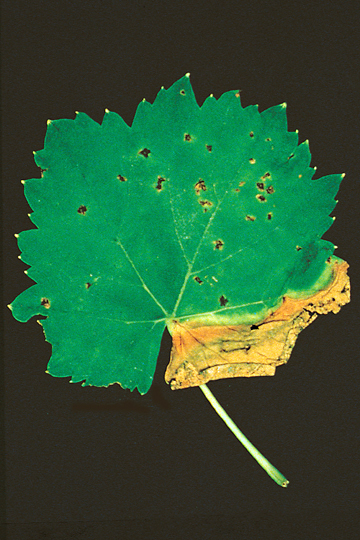
Bacterial blight (Bacterial necrosis) | Grape
DISEASE: Bacterial blight (Bacterial necrosis)
HOST: Grape (Vitis vinifera)
PATHOGEN: Xylophilus ampelinus
PATHOGEN SYNONYM: Xanthomonas ampelina
SOURCE: C. Panagopoulos
DISEASE: Bacterial leaf spot (Blight)
HOST: Beet
Seedling blight stage of the disease.
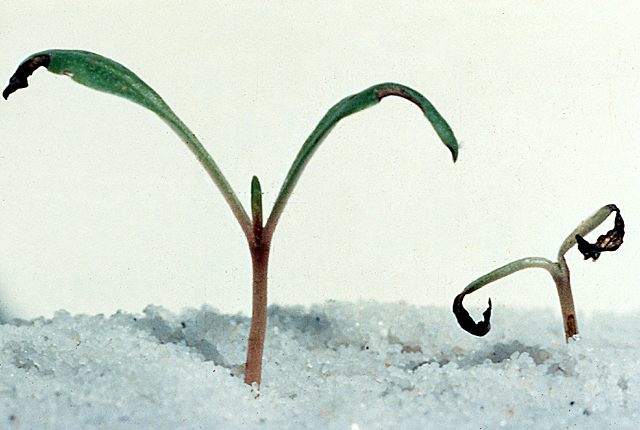
Bacterial leaf spot (Blight) | Beet
DISEASE: Bacterial leaf spot (Blight)
HOST: Beet (Beta vulgaris)
PATHOGEN: Pseudomonas syringae pv. aptata
PATHOGEN SYNONYM: Pseudomonas aptata
SOURCE: C. Schneider
DISEASE: Bacterial leaf spot (Blight)
HOST: Beet
Leaves with dark brown necrotic regions and streaks; two petioles also are infected.
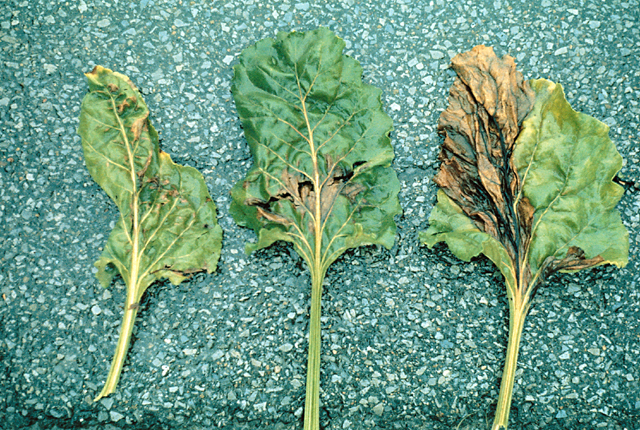
Bacterial leaf spot (Blight) | Beet
DISEASE: Bacterial leaf spot (Blight)
HOST: Beet (Beta vulgaris)
PATHOGEN: Pseudomonas syringae pv. syringae
SOURCE: C. Schneider
DISEASE: Bacterial leaf spot of beet
HOST: Beet
Beet leaves with spots and marginal necrosis.
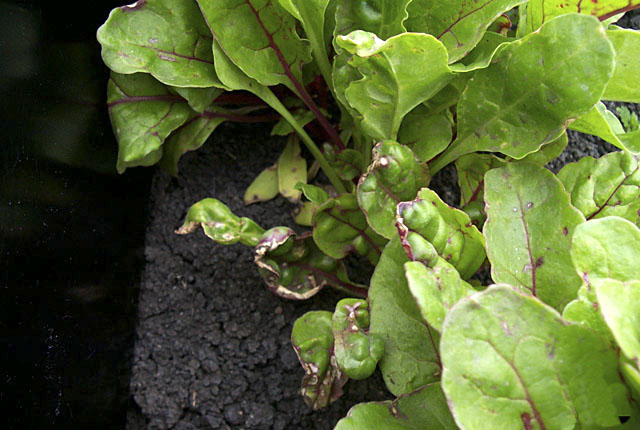
Bacterial leaf spot of beet | Beet
DISEASE: Bacterial leaf spot of beet
HOST: Beet (Beta vulgaris subsp. vulgaris)
PATHOGEN: Pseudomonas syringae pv. aptata
PATHOGEN SYNONYM: Pseudomonas aptata
SOURCE: P. Brown


